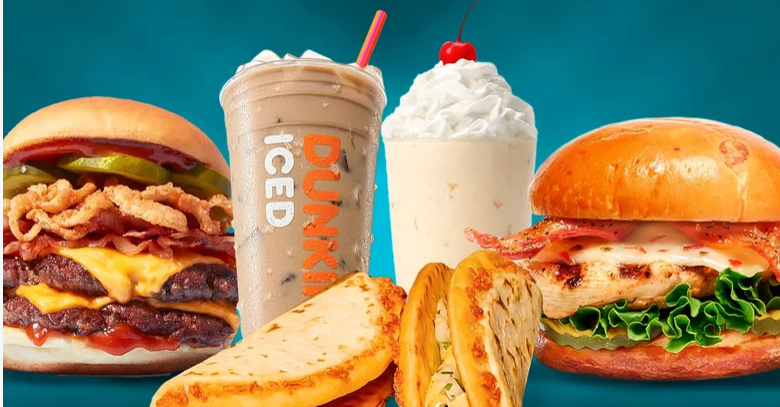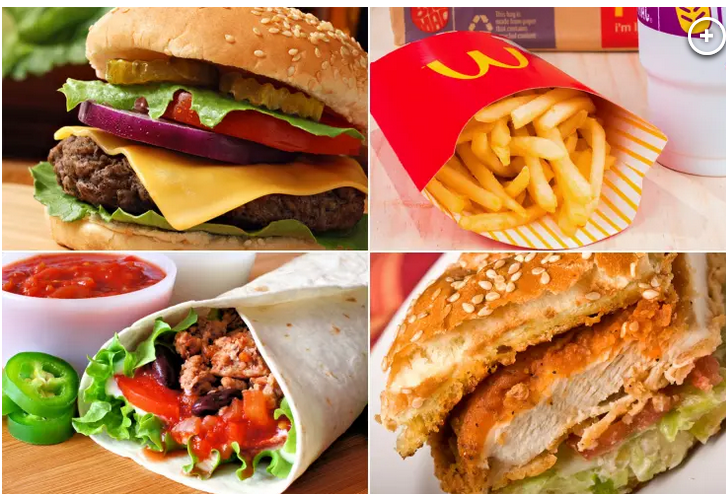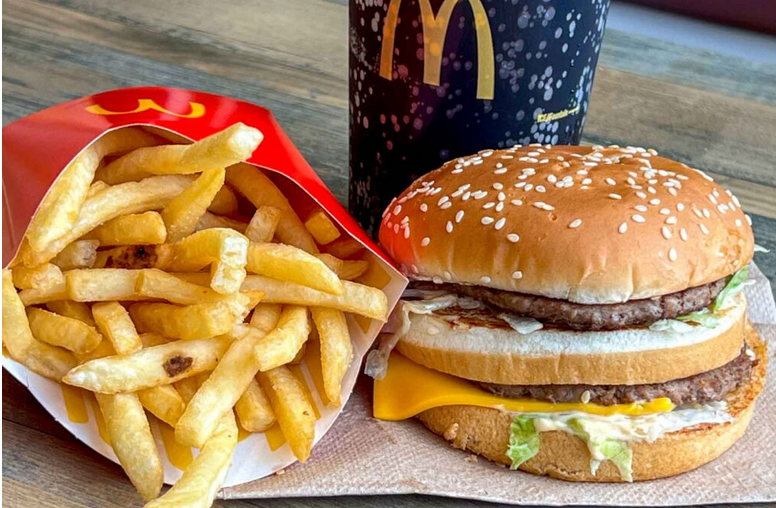Fast food is more than just a quick bite to eat — it’s a global phenomenon that has shaped modern culture, redefined convenience, and sparked passionate debates about flavor, nutrition, and value. Whether you’re grabbing a burger on your lunch break, indulging in a late-night taco run, or seeking comfort in a crispy chicken sandwich, fast food is woven into the fabric of daily life for millions. But when it comes to crowning the best fast food, the answer is anything but simple. Is it the iconic Big Mac? The spicy crunch of a Popeyes chicken sandwich? Or maybe the In-N-Out Double-Double, revered by burger purists?
This essay dives into the fast food world, exploring its evolution, its top contenders, what makes certain menu items stand out, and how it all adds up to the ongoing question: what is truly the best fast food?

The Origins and Rise of Fast Food
Fast food as we know it today has its roots in the early 20th century United States. The idea was simple but revolutionary: serve food quickly, consistently, and affordably. The concept flourished in a rapidly industrializing world where time was increasingly scarce and mobility was on the rise.
White Castle, founded in 1921, is widely credited as the first fast food hamburger chain. Its emphasis on cleanliness, uniformity, and quick service set the standard for what fast food would become. But it was McDonald’s, started in 1940 and franchised by Ray Kroc in the 1950s, that truly launched the fast food revolution. With assembly-line kitchens, standardized menus, and a strong brand identity, McDonald’s became a global powerhouse.
From there, the industry exploded. Burger King, Wendy’s, Taco Bell, KFC, and others carved out niches with their own signature offerings. The globalization of American fast food brands in the latter half of the 20th century spread this culinary style across continents.
Defining “The Best”
When discussing the best fast food, several factors come into play:
- Taste and Flavor – Ultimately, it’s about satisfaction. Is the food delicious, crave-worthy, and memorable?
- Consistency – Can you get the same great taste whether you’re in New York or Tokyo?
- Speed and Convenience – How fast is the service? How easy is it to order?
- Value for Money – Are you getting good quality and quantity for what you pay?
- Cultural Relevance – Does the brand or food connect to a broader cultural moment or movement?
- Innovation – Are they doing something new or changing the game?
Let’s examine the fast food giants and key menu items through this lens.
Titans of the Fast Food World
1. McDonald’s: The Global Icon
McDonald’s is often the first name that comes to mind in any fast food conversation. Its signature Big Mac, fries, and McNuggets are iconic. The golden arches are recognized around the world.
Why it’s a contender for the best:
- Massive global reach and consistency.
- Innovative marketing (e.g., McDonald’s Monopoly, celebrity meals).
- Nostalgic menu items and seasonal hits like the McRib or Shamrock Shake.
Criticism:
- Seen as overly processed or bland compared to some competitors.
- Health concerns due to high calorie and sodium content.
2. Chick-fil-A: Chicken Reimagined
Chick-fil-A has built its brand around one thing: chicken sandwiches. And many say it’s the best in the game. Its juicy, perfectly seasoned chicken, buttery buns, and signature sauces have earned it a cult following.
Why it stands out:
- Focused menu with quality ingredients.
- Impeccable customer service (often ranked #1 in satisfaction).
- High flavor-to-price ratio.
Controversies:
- Criticized in the past for donations to organizations opposing LGBTQ+ rights, which led to backlash in some areas.

3. In-N-Out Burger: West Coast Royalty
A California institution, In-N-Out is beloved for its simple yet perfect menu: burgers, fries, shakes. The “secret menu” (Animal Style, anyone?) adds a layer of cool exclusivity.
Why it’s considered one of the best:
- Fresh ingredients, never frozen beef.
- Customization options without overwhelming the menu.
- Cult-like devotion from fans.
Limitations:
- Only available in certain regions (mostly Western U.S.).
- Some criticize the fries for being bland.
4. Popeyes: The Sandwich War Champion
In 2019, Popeyes launched a chicken sandwich that went viral — sparking lines, sellouts, and social media chaos. It was a defining moment in fast food history and cemented Popeyes as a heavyweight.
What makes Popeyes exceptional:
- Bold, Cajun-inspired flavors.
- Crispy, juicy chicken that balances texture and taste.
- Sides like red beans & rice and biscuits that add southern soul.
Drawbacks:
- Inconsistent service at some locations.
- Sometimes heavy-handed on the salt.
5. Taco Bell: The King of Creative Fast Food
Taco Bell is known for mashing up Mexican-inspired cuisine with bold American flair — think Doritos Locos Tacos, the Crunchwrap Supreme, and the Quesarito.
Why it’s a top contender:
- Constant innovation and quirky marketing.
- Customizable, vegetarian-friendly menu.
- Late-night appeal and affordability.
Where it falls short:
- Not exactly authentic Mexican food.
- Quality varies significantly between locations.
Honorable Mentions:
- Wendy’s – Known for fresh, never frozen beef, the Frosty, and Twitter sass.
- Shake Shack – More upscale and expensive, but incredibly tasty burgers and crinkle-cut fries.
- Five Guys – Huge portions, excellent toppings, and peanuts while you wait.
- KFC – A global fried chicken giant with creative international offerings.
Fast Food and Culture
Fast food isn’t just about eating — it’s tied to broader cultural themes: nostalgia, convenience, globalization, and identity. For many, fast food is a memory of childhood, a guilty pleasure, or a slice of home while traveling.
Pop culture has immortalized fast food through films, songs, and social media. From the McDonald’s in “Pulp Fiction” to the viral Wendy’s tweets, these brands aren’t just restaurants — they’re cultural artifacts.
Fast food also reflects societal changes. For example, the rise of plant-based items (like Burger King’s Impossible Whopper) shows growing interest in sustainability. Chains now offer delivery apps, calorie counts, and allergen-friendly options to match modern expectations.
Health and the Fast Food Dilemma
One of the biggest criticisms of fast food is its health impact. Many menu items are high in calories, sodium, saturated fats, and added sugars. Fast food is linked to obesity, heart disease, and other health issues when consumed excessively.
However, the industry is evolving:
- More chains offer salads, grilled options, or smaller portions.
- Calorie information is now often provided by law.
- Plant-based and vegetarian menus are growing.
Ultimately, moderation and choice are key. Fast food can be part of a balanced lifestyle — especially when paired with awareness and options.
Personal Favorites and Public Opinion
Surveys and rankings often crown different champions depending on criteria. For example:
- Best Fries? McDonald’s, hands down.
- Best Burger? In-N-Out or Shake Shack.
- Best Chicken Sandwich? Popeyes or Chick-fil-A.
- Most Innovative? Taco Bell.
But personal preference always wins. For some, nostalgia makes McDonald’s unbeatable. For others, a hot Popeyes sandwich with extra pickles is the pinnacle of perfection. The best fast food is subjective — it’s the place you crave when you’re hungry, tired, or just need a pick-me-up.
Conclusion: What Is the Best Fast Food?
There may never be a definitive answer to what is the best fast food. Each brand has its strengths, signature items, and loyal fan base. Some excel in flavor, others in innovation, others in consistency or customer experience. The “best” fast food, like any cuisine, is personal — it depends on your tastes, your memories, and your moment.
Yet, a few stand out as leaders in the conversation:
- For burgers: In-N-Out for purists, McDonald’s for classics, Shake Shack for indulgence.
- For chicken: Popeyes for crunch, Chick-fil-A for balance.
- For creativity: Taco Bell.
- For global presence: McDonald’s and KFC.
Whether you’re a fan of the classics or constantly chasing the next big thing, fast food offers a little something for everyone. And maybe that’s the real answer — the best fast food is the one that hits the spot when you need it most.
Want this in a more casual, persuasive, or humorous tone? Or focused on a specific country or chain? I can tweak it however you want!
Food is much more than fuel. It is culture, connection, history, science, art, and emotion all wrapped into one. From the simple pleasure of biting into a perfectly ripe fruit to the complexity of a gourmet multi-course meal, food is a fundamental part of what it means to be human. It brings people together, expresses identity, carries tradition, and evolves with us. Across all boundaries — geographical, linguistic, social — food serves as a universal language.
In this essay, we’ll explore the world of food in depth: its origins, cultural significance, emotional power, global diversity, the impact of modern food systems, and how it continues to shape and reflect who we are.
The Origins of Food Culture
The story of food is the story of humanity. As hunter-gatherers, our earliest ancestors relied on the land for survival. They foraged wild plants, hunted animals, and learned seasonal rhythms. As societies developed agriculture around 10,000 years ago, everything changed. The domestication of wheat, rice, corn, and animals gave rise to settled civilizations, trade, and the first food cultures.
Early humans didn’t just eat to live — they began to cook, ferment, and preserve. They flavored foods with herbs and spices, often for health as well as taste. In time, meals became rituals, expressions of hospitality, and foundations of community life. Even then, food was already more than nourishment.
Food as Culture
Every culture has its own food traditions that reflect its geography, history, religion, and values. Food is one of the most powerful expressions of cultural identity.
- In Italy, food is about simplicity and seasonality — tomatoes, basil,Best Fast Food olive oil, pasta. Meals are family affairs and eating is an act of love.
- In Japan, the aesthetic and seasonal aspects of food are central. From sushi to kaiseki, presentation and harmony are key.
- In India, spices are everything. Each region has its own culinary language, with thousands of variations in flavor, cooking methods, and ingredients.
- In Mexico, food tells the story of ancient civilizations, colonial influences, and vibrant indigenous traditions — maize, chili, beans, and cacao forming the base of countless dishes.
Even within countries, food reflects regional diversity. In the U.S., for example, New England clam chowder, Southern fried chicken, and California’s fusion cuisine all speak to local histories.
Food and Emotion
Food is deeply tied to emotion. We celebrate with food, mourn with food, and show love through food. Think about the comfort of your grandmother’s cooking, the joy of a holiday feast, or the nostalgia in a childhood snack. These experiences aren’t just about flavor — they are about memory, connection, and identity.
The phrase “comfort food” exists for a reason. Whether it’s mac and cheese, ramen, or warm cookies, these foods satisfy more than hunger — they soothe us. Science backs this up: the smells and tastes of certain foods trigger emotional memories and even boost mood-related chemicals like dopamine.
Food is also love language in many cultures. In countless households, cooking for someone is how people say, “I care about you.” A homemade meal can be more powerful than words.
Food Diversity Around the World
One of the most fascinating aspects of food is its global variety. Each region on Earth has developed unique culinary traditions shaped by climate, resources, and history.
Asian Cuisine
- Chinese cuisine balances five flavors (sweet, sour, bitter, spicy, salty)Best Fast Food and offers incredible variety: Cantonese dim sum, spicy Sichuan, rich Beijing duck.
- Thai food is vibrant and aromatic — coconut milk, lemongrass, chili, and lime in harmony.
- Indian cuisine uses layers of spices and techniques — curries, dosas, biryanis, and countless vegetarian dishes.
African Cuisine
- In West Africa, you’ll find jollof rice, fufu, and peanut stews.
- Ethiopian cuisine is known for injera (a sourdough flatbread) and communal eating.
- Across the continent, food is rich with meaning, community, and heritage.
European Cuisine

- French cuisine emphasizes technique and presentation — sauces, pastries, fine dining.
- Spanish cuisine brings bold flavors like tapas, paella, and chorizo.Best Fast Food
- Greek and Mediterranean food focuses on olive oil, herbs, grilled meats, and fresh vegetables.
Latin American Cuisine
- Mexican food combines ancient traditions with modern techniques — tamales, tacos, mole.
- Brazilian cuisine reflects Portuguese, African, and Indigenous roots.
- Peruvian food has recently risen in popularity for its bold flavors and unique ingredients like aji peppers and quinoa.
Middle Eastern Cuisine
- Includes dishes like hummus, falafel, kebabs, and tabbouleh.
- Flavored with spices like cumin, cinnamon, and sumac.
- Often vegetarian-friendly, with an emphasis on shared meals and hospitality.
Modern Food Systems
While traditional food culture is beautiful and diverse, the modern food landscape has shifted dramatically due to industrialization, globalization, and technology.
Industrialization and Processed Food
Today, most people don’t grow or hunt their own food. Instead, they rely on global food systems that process, package, and distribute meals on a massive scale. This has led to:Best Fast Food
- Convenience: Fast food, frozen meals, delivery apps.
- Overconsumption: Easy access to high-calorie, low-nutrient foods.
- Environmental Impact: Agriculture is a major contributor to greenhouse gas emissions, deforestation, and water usage.
While these systems help feed billions, they come at a cost to health, sustainability, and local food traditions.
Globalization and Fusion
On the flip side, globalization has made food incredibly accessible. You can eat sushi in Paris, tacos in Tokyo, or Thai curry in New York. Fusion cuisine blends traditions creatively Best Fast Food— Korean tacos, butter chicken pizza, or ramen burgers.
The world is a buffet, and people are experimenting more than ever before. Social media and food influencers drive trends, making obscure ingredients and dishes go viral overnight.
Health and Food
Our relationship with food also affects our health — both physical and mental. In many parts of the world, there are two co-existing problems: malnutrition and obesity.
- In some countries, people struggle to get enough calories or nutrients.Best Fast Food
- In others, people eat too many empty calories, leading to lifestyle diseases like diabetes, heart disease, and hypertension.
This has sparked a wave of interest in:
- Whole foods and plant-based diets.
- Mindful eating and intuitive eating.
- Superfoods like kale, quinoa, chia seeds, and turmeric.Best Fast Food
- Functional foods designed for better gut health, energy, and immunity.Best Fast Food
The challenge is finding a balance between nourishment, pleasure, and sustainability — eating well without obsession, shame, or deprivation.
The Future of Food
As the world population grows and climate concerns intensify, the food industry is undergoing a revolution. Future food trends include:
- Plant-Based Innovation: Brands like Beyond Meat and Impossible Foods aim to reduce meat consumption with realistic alternatives.Best Fast Food
- Lab-Grown Meat: Real meat without the animal Best Fast Food— grown from cells in a lab.
- Vertical Farming: Growing food in urban environments using hydroponics and LED lights.
- Insects as Protein: Crickets and mealworms are nutritious and sustainable.
- Food Tech: Smart fridges, AI-generated recipes, and apps that reduce food waste.
People are also focusing on local eating, regenerative agriculture, and zero-waste cooking to minimize their environmental footprint.
Food and Connection
Ultimately, food connects us — to others, to the past, and to ourselves. It’s the dinner table conversations, the recipes passed down through generations, the street food shared with friends, and the quiet joy of a solo meal.
Food is political. It’s personal. It’s global. It’s intimate. It’s art. And it’s daily life.Best Fast Food
Whether you’re eating in a Michelin-starred restaurant or enjoying a home-cooked meal in a small village, food has the power to break barriers, open hearts, and remind us of our shared humanity.
Conclusion
Food is one of the most essential parts of life — not just for survival, but for meaning, joy, and identity. It is at once universal and deeply personal. It reflects where we come from, how we live, and what we value. From ancient grains to futuristic lab-grown meats, from humble soups to extravagant feasts, food tells the story of who we are.Best Fast Food
In a fast-changing world, food remains a constant thread — one that ties us together across time, space, and culture. And that, perhaps, is the most beautiful thing about it.Best Fast Food
If you’d like this turned into a formatted article, PDF, or a version with images or citations, I can help with that too! Or if you want a follow-up like “2000 words on desserts” or “food and mental health,” just say the word 🍜
Very good https://lc.cx/xjXBQT
Awesome https://lc.cx/xjXBQT